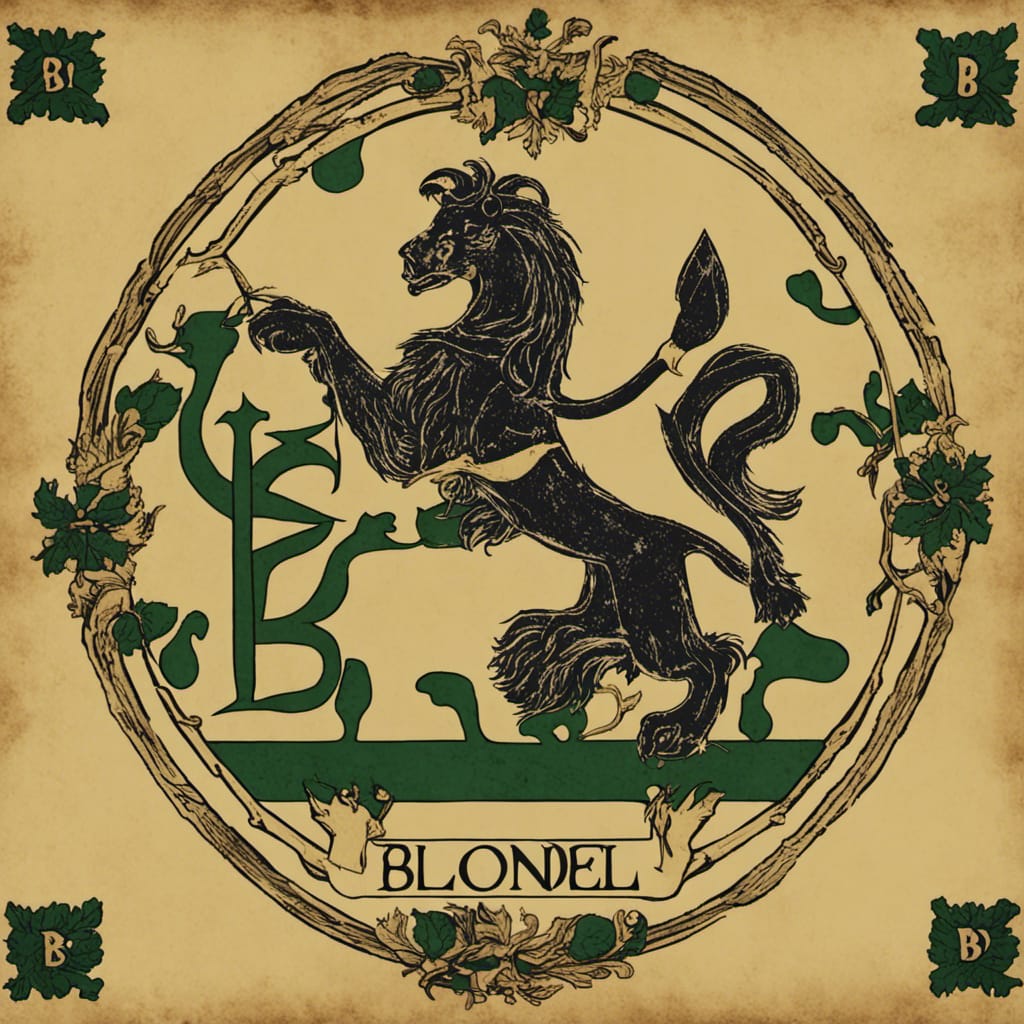The 75 Fiefs & Seigneuries of Guernsey ( Guernésiais )

Above is a 577 Year old Legal Title Deed Transfer for the Fief Blondel & Fief d'Eperons in Guernésiais
- Grant of the fief of Thomas
Blondel in the parishes of St Peter of the Wood and Torteval, Guernsey, made by Janet Blondel to Thomas de la
Court on 18 July 1440, attested by Jean Bonamy and Jacques Guille, jurats. Copy purchased from the
University of Leeds. The original Fief of Blondel dates back to 1270AD or over 750 Years ago and is
part of the original Fief Au Canelly.
There are 24 private Seigneurs of Fief doms in the old Viking Norman Islands of
Guernsey and Sark :
The Fief of Thomas Blondel in the parishes
of Torteval and St. Peter in the Wood is an authentic Norman title. The Seignuers (Free Lords) of
Blondel existed before formal Baron titles were created. Fief Blondel is part of the former large Fief
of Canelly, once held by William de Chesney (1284) and before him by the Le Canellys until the separation of
Guernsey from Normandy in 1204.

1) List of The Private Fiefs of
Guernsey
SEE DIGITAL FIEF MAP
1-Le Comte, Bruniaux-de-Nermont (*), Philippes (*), Cour, Grantez, Longues, Reveaux,
Rozel, Fouquees, Bequepee, Chapelle-de- St-Georges, Saumarez au Castell, Coltons, Gohiers, Fortescu, Janin Besnard,
Cantereine
2-Sausamez (*), a Saint Martin, Hailla (1/3)
3- Fantome (*), Domaine-de-Dom-Hue
4-Rohais (*)
5-Groignet
6-Blanchelande (*)
7-Canely (*),
8-Anneville (*)
9-Maumarquis (*)
10-Henry de Vaugrat (*)
11-Bruniaux (*) a Saint-Martin
12-Fief des Eperons
13-Beuval, Massy Gros.
14-Fauville
15-Sainte-Helene
16-Carteret
17-Lucas Arnault & Dom Jean Le Moigne
18-Videclins
19-Riviere
20- Fief Blondel (Private Fief of Thomas Blondel) (*) Thomas Blondel
may include several Fiefs within its Territory - Fief L'Eperon
of Torteval, and possibly Bouvee DuQuemin from the 1968 Livres
Perchage.
This Ancient Eperon/Spurs Fief woud be a dependency Fief of the Fief Thomas Blondel according to
a 1440 University of Leeds
Deed.
The 1968 Livres de Perchage of Thomas Blondel Includes a: Bouvee DuQuemin
21-Robert de Vicq
22-Marchant
23-Beauvoir
24-Cocq
25. Fief Rosiere
(this means 25 private Seigneurs totalling about 46 Seigneuries)
During the Ancien Régime, Frankish Norman baronies were very much like Scottish ones. Feudal landholders were
entitled to style themselves baron if they were nobles; a roturier (commoner) could only be a seigneur de la
baronnie (lord of the barony). In Scandanavian Countries, Baron is used orally, while it is written as Friherre.
The word baron was not used until after the Free-Holder Fiefs of Guernsey were established.
Sir Thomas Innes of Learney in his 'Scots Heraldry' (2nd Ed., p. 88, note 1) states that 'The Act 1672, cap 47,
specially qualifies the degrees thus: Nobles (i.e. peers, the term being here used in a restricted
seventeenth-century English sense), Barons (i.e. Lairds of baronial fiefs and their "heirs", who, even if fiefless,
are equivalent to heads of Continental baronial houses) and Gentlemen (apparently all other armigers).' Baronets
and knights are evidently classed as 'Gentlemen' here and are of a lower degree than Barons.
The Fief de Beuval is held by six persons and the Fief de la Riviere is hold by nine persons.
Those of the king even took the title of Freiherr ( free seigneur ) , equivalent to baron .
FEUDAL REGIME - CHARLES SEIGNOBOS · 1933 ·
The specific title of baron was known in France, but he was more usually called a seigneur. Armies of Feudal
Europe 1066-1300 - Page 265 Ian Heath · 2016
2) List of Fiefs Owned by the CROWN
Crown holdings Fiefs:
1-Le Roi (*)
2-Saint-Michel (*)
3-Saint-Martin (*)
4-Eveque (*)
5- Rue-Frairie (* Croix de St. Leufroy)
6-Caen (*)
7-Gallicien
8-Hailla (2/3)
9-Haule
10-Velleresse
11-Levin
12-
13-Rozel a St. Pierre Port
14-Franc manoir le Marchant
15-Pleinmont
16-Huit Bouvees (Begueville). Torteval
17-Huit Bouvees. St. Pierre-du-Bois.
18-Lihou
19-Suart, Pomare, Leree, Herne, Rougier
20-Gervaises
21-Chevalier
22-Sotuas
23-Couture
24-Corbinez
25-Dix Quartiers Blondel
26-Naunage
27-Jean du Gaillard
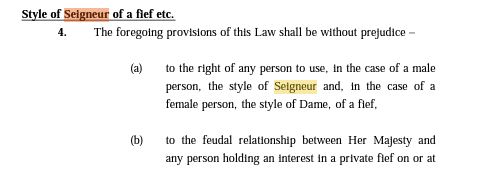


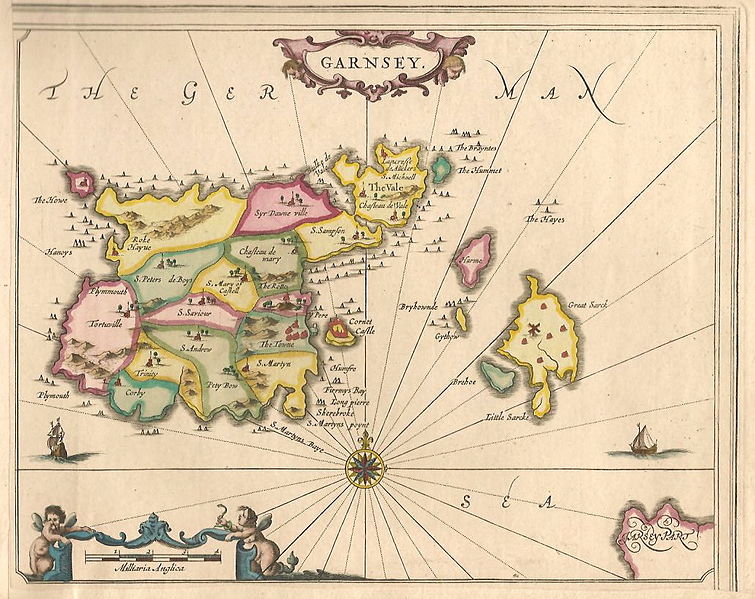
(*) Fiefs owing suit at Royal Court Chief Pleas
(IV) The Seigneurial titles of Guernsey
As commented above, in 1020 Duke Richard II divided Guernsey diagonally in two halves, granting the south and east
to Néel, Vicomte of the Cotentin, and the west to Anchetel, Vicomte of the Bessin. The Clos du Valle was apparently
wasteland. The two initial fiefs had some vicissitudes but by the time of the conquest of England both had returned
to the families of the original holders.
Evolution of Fief du Bessin:
The Fief du Bessin consisting of the Vintaine de L’Epine, and the parishes of the Castel, St. Saviour’s and St.
Pierre-du-Bois, became known as Fief Le Comte in 1120 when Ranulf the “Vicomte du Bessin” was created Earl of
Chester. During the 12th century the fief was split into sub-fiefs: Fiez Rozel, Fief Longues, Fief Suart and Fief
Sotuas. The Fief San Michel was originated in a donation of non-arable wasteland to the monastery of that name.
After 1204 the fief Suart divided in two parts, one went to the crown while the rest was named fief Reveaux. The
half of the Fief Suart retained by the Crown while the other half given to the Revel family led to the emergence of
the Fief de Gohiers, Fief de la Pomare and others. Agricultural developments and sales in the Fief Le Compte
originated new sub-fiefs such as Fief Groignet, Fief Carteret, Fief Grantez or Fief Videclin. Similarly, land
disposals from St. Michel accounted for the Fief Saumarez and Fief Jean du Galliard.
Evolution of Fief du Cotentin:
After the Battle of Val ès Dunes (1047), Duke William II created and granted several ecclesiastical fiefs. From
1144 to 1150 the whole island belonged to Geoffrey of Anjou. The wasteland of Fief du Cotentin as a part of
Geoffrey possessions became under his son Fief Le Roi. New sub-fiefs originated during the 11th and 12th centuries
like Fief Aux Fay and Fief Burons. The Fief Au Fay was held by payment of a pair of silver spurs and the Fief
Burons by payment of a pair of gilded spurs. Both were combined as the Fief des Eperons (spurs) with the duty of
payment a pair of silver-gilt spurs.
After 1204 the Crown got some territories form previous Norman holders that decided to render homage to France,
thus loosing their island territories. That is the origin of some fiefs such as Fief des Bruniaux, Fief Au
Marchant, and Fief Hailla. Fief de Sausmarez originated in the Fief Barneville. From St. Martin’s and associated to
the defence of the Church originated Fief de la Velleresse (velleresse from veiller = keep a watch on the coast,
having this obligation)
From fief Le Roi originated Fief de Rozel formerly held by the Cotentin family de Rosel which passed to the Crown
in 1204 together with the fief granted by Duke William II to the Abbey of Marmoutiers. Geoffrey of Anjou created
about 1150 when he was developing his plans for the invasion of England two military fiefs De Vaugrat and Bruniaux
in St. Sampson’s parish. Also from this parish is Fief Anneville granted by Henry III to Sir William de Cheny in
1248.
The evolution of the lands in the parish of Torteval is complicated, because although initially in the Fief du
Cotentin, many of its fiefs overlap into St. Pierre-du-Bois, which is part of Fief du Bessin.
The original Fief Au Cannely (granted to the Cherbourg family and naturally in the territory of Fief du
Cotentin) has been replaced by several sub-fiefs as a result of marriages and settlements: Fief Guillot Justice,
Fief Janin Besnard, Fief de Thomas Blondel, Fief Bouvée Duquemin, Fief Robert de Va (or de Vere ), Fief Jean du
Gaillard (that passed to the Crown in early 16th Century), etc. A perplexing overlapping of territories thus
emerged. By 1248 the distribution of the fiefs was much as at present time.
The dovecote of fief Au Canely. The Seigneur has the right to get there by foot or by horse by day or by
night.
The number of Guernsey fiefs have remained unchanged since the 14th/XIV century.
The titles have been kept in some cases in the same families for years (Sausamez). All 75 Seigneuries are
perfectly documented; this is not the case with other Channel Islands titles. In January 2004, 24 private Seigneurs
hold 46 Seigneuries that means that some Seigneurs hold more than one title. Two more Seigneures (Riviere and
Beuval) are held by more than one person and the additional 27 fiefs belong to the Crown. The title is transferred
by conveyance. The transfer must be in accordance with Guernsey practice. That means that the testament or
conveyance must be done in accordance with the Guernsey law. The document is registered at HM Greffe
The number of Guernsey fiefs has remained unchanged since the 14th century. The titles were kept in
some cases, the same families ans (Sausamez). All 75 Lordships are perfectly documented; This is not the case with
the other titles of the Channel Islands. In January 2004, 24 Private Lords hold 46 Lordships which means that some
Lords stall more than one title. Two more Seigneures (Riviere and Beuval) are held by more than one person and the
fiefs of 27 others belong to the Crown. The title is transferred by means of transport. The transfer must be
consistent with Guernsey's practices. This means that the will or the means of transport must be made in accordance
with the Guernsey Law. The document is registered in the HM Registry
The Fief de Thomas Blondel
The Private &
Free Fief of Blondel came about through the medieval fragmentation of Fief Au Canelly (originally part of the Fief
du Cotentin) and consequently, of the initial half of Guernsey given by Duke Richard II in 1020 to Neel,
Vicomte of the Cotentin.
The Canelly family
owned land near Cherbourg in Normandy in addition to the Guernsey territory (There is no existing record of the
grant of the fief). It may be granted to the Canely family but there is a gap of at least 100 years before any
record of that family’s connection with the fief).
In
1270, on the death of Sir Henry Le
Canelly, the Guernsey fief was divided between his daughters. Guilemette, the
wife of Henry de Saint Martin obtained a considerable part of the island originating later the fiefs of Janin
Besnard, Jean du Gaillard, Guillot Justice and Thomas
Blondel.
This was confirmed
by the tenants and officers of the Fief in letters patent issued by Guernsey's Royal Court under the Bailiwick Seal
in 1463.
Traditions:
For instance, the Abbot of Mont St. Michel owed the Crown Officers three dinners a year, and the Prior of Lihou
owed one to the tenants of the Fief Thomas Blondel.
Book Citation
Jurats
- A Thomas Blondel was a jurat of Guernsey’s Royal Court from
1421-45. The Blondel family has given several jurats to the island.
Example of Grant of the fief of Thomas Blondel in the parishes of St Peter of the Wood and Torteval, Guernsey, made
by Janet Blondel to Thomas de la Court on 18 July 1440, attested by Jean Bonamy and Jacques Guille, jurats. GRANT
of BLONDEL
https://library.leeds.ac.uk/special-collections-explore/5701/grant_of_a_fief_in_the_parishes_of_st_peter_of_the?archiveRefCode=%22MS%20699%22&resultOffset=2
Feudal History of the Free Fiefs of Guernsey
About the same time, William the Conqueror, to reward the services of his esquire, Sampson d'Anneville, who had
been sent over to protect the inhabitants from the ravages of pirates, granted him the fief or seigniory of
Anneville, which comprised about another quarter of the cultivated lands in the Island.
Other grants soon after followed, in all sixteen; and Sampson soon saw the civil government of the Island
established on the same basis as in other parts of the Duke's dominions. Six of these grants were bestowed upon
ecclesiastics, and the other ten on laymen, and lhe remainder of the lands belonging to the crown were divided into
thirteen bordage-tenures. We find them described in the insular records, and first in an inquest taken in the year
1244, by order of King Henry III. by George de Bullizon, then governor, assisted by twenty-two of the most
intelligent inhabitants, sworn for the purpose, who say, that one-half of the Island belongs to our lord the King,
and those who hold under him by knight's service or in capite; the other half is divided between the Abbot of St.
Michael and Robert de Vere (ancestor of the Earls of Oxford and Dukes of St. Alban's, and to whom the fief
D'Anneville, which had escheated to the crown, had been granted by King John); and in other records, the lords of these fiefs are called liberi homines and
franc-tenans, free men, or free tenants.
On each of these fiefs was instituted a court for deciding civil contests arising on the fief; and there was also a
superior court established in the Island, composed of a bailiff and four knights or chevaliers, who held annual
assizes, at which the military tenants or lords of fiefs attended, and appeals from inferior courts were heard.
This sort of judicature continued till the reign of King John, who, by a charter, established twelve jurats in lieu
of the four chevaliers or knights, who immediately checked, and in course of time so effectually destroyed, the
feudal system of government, that little or nothing at this day remains that has the least allusion to
slavery.
These sixteen free tenants, and the thirteen bordiers, attend the Chief Pleas, opening the court on the first day
of the three terms, when bye-laws are made for the internal government of the Island. The names of the free tenants
are called over immediately after the bailiff and jurats, but they are not now consulted with respect to the
bye-laws and ordinances, as they were formerly; so that their appearance is a mere matter of form, nor are they
even obliged to attend in person, according to original custom: any one may answer for them by power of attorney,
or if they do not answer at all, they are free by paying a small fine. An entertainment is on these days provided
for the whole court, military tenants, and bordiers, at the expense of the governor.
** If the Lord Baron Seigneur is not available, another may be approved to serve in the place
of the Seigneur as The Lord Regent.
Lord Regent
Seigneur Régent
Herre Regent
Herr Regent
Herregud
Feodal Friherre
Signore Reggente
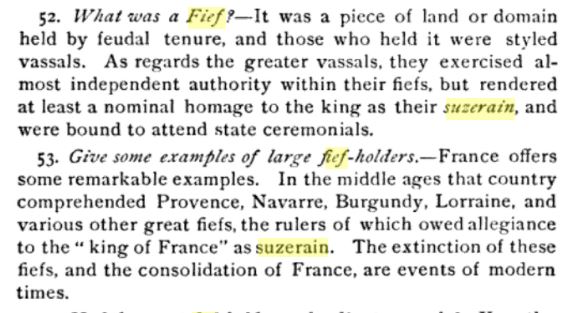
Lord Kinnear, in Smith v. Lerwick Harbour Trustees said about the Crown's property rights: "If the
solum of Shetland as a whole is not originally the property of the Crown, I know of no authority, and can see no
reason, for holding (saying) that part of it which is called the foreshore is Crown Property". This statement could
equally well be applied to the seabed, especially since the foreshore is regarded as part of the
seabed in English law. S.O.U.L.
(udallaw.com)
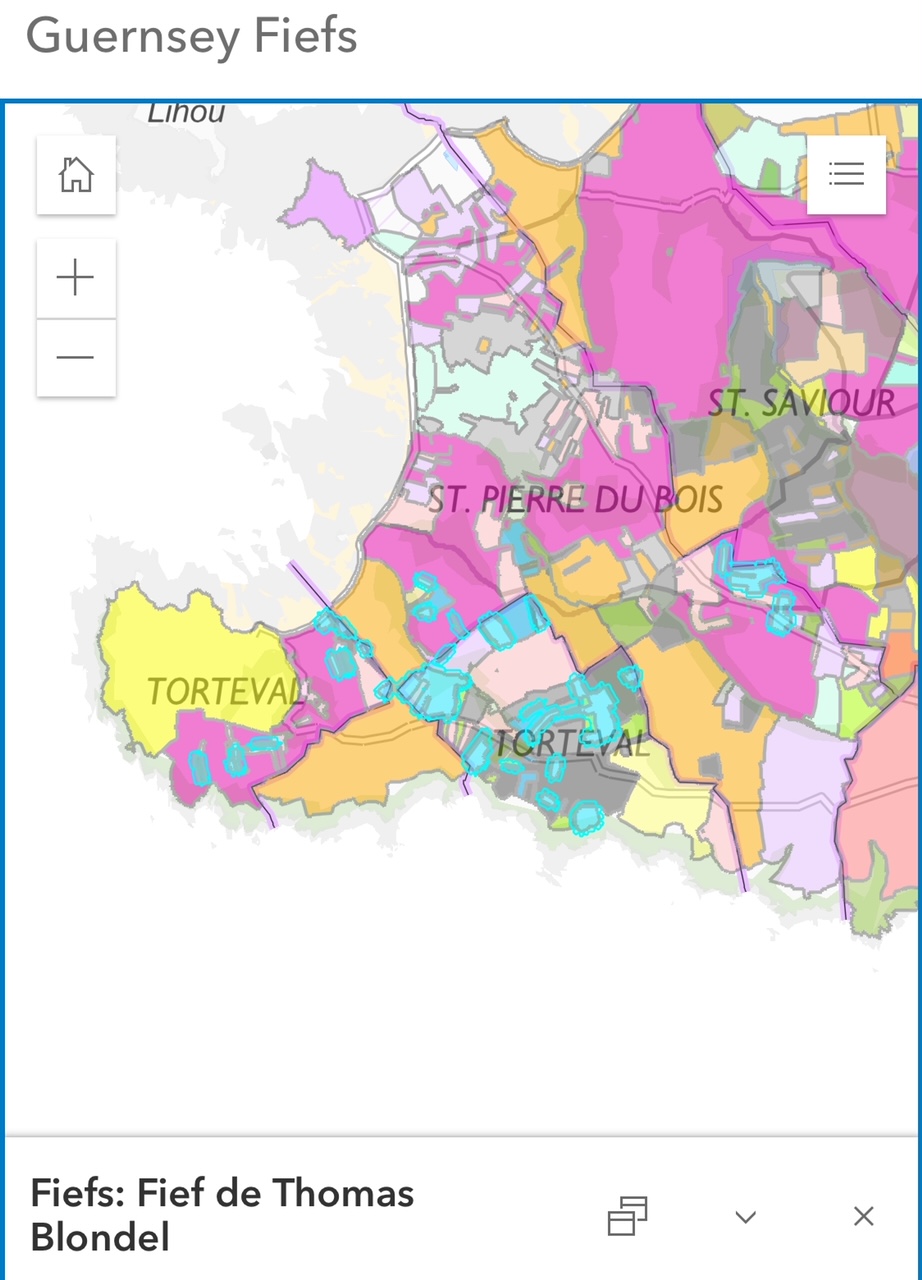
The registration of the Seigneur of Fief Thomas Blondel directly with the Crown in the Royal Courts indicates a
few significant points about the nature of this seigneurial title and its relationship with the Crown:
-
Direct Vassalage: The Seigneur of Fief Thomas Blondel holds the fief directly from the
Crown, meaning there are no intermediate lords between the seigneur and the monarch. This direct vassalage
establishes a unique and prestigious connection with the Crown.
-
Historical Significance: Such direct registration typically means that the fief and its
seigneurial title have historical importance, often dating back many centuries. These titles were usually
granted for services rendered to the Crown or as part of feudal agreements.
-
Legal Recognition: Being registered in the Royal Courts ensures that the title and its
associated rights and privileges are legally recognized and protected. This registration helps maintain the
continuity and legitimacy of the title through successive generations.
-
Rights and Duties: The seigneur may have certain traditional rights and
responsibilities, which could include the administration of justice within the fief, collection of certain
feudal dues, and participation in ceremonial or local governance roles. However, the extent of these rights
and duties can vary and may have been modified by modern laws and reforms.
-
Ceremonial Role: In contemporary times, many of the practical aspects of seigneurial
power have been reduced or are purely ceremonial. However, the historical and cultural significance of the
title often remains, and the seigneur may still play a role in local events and traditions.
Overall, the registration of the Seigneur of Fief Thomas Blondel with the Crown underscores the enduring legacy
and formal recognition of this seigneurial title within the legal and historical framework of the Channel
Islands.
|







